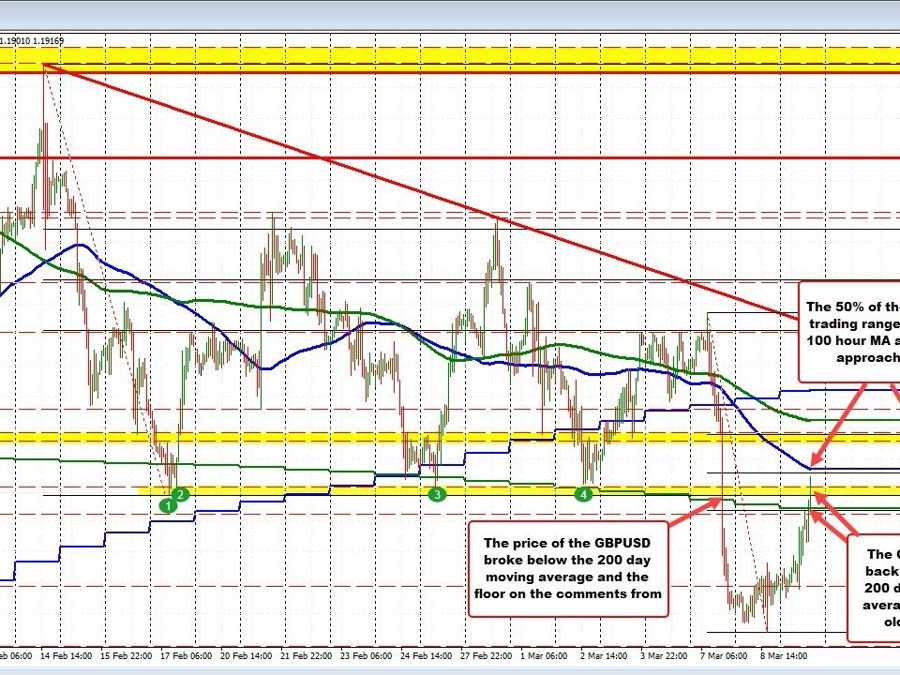GBPUSD squeezes higher
The GBPUSD has seen additional momentum to the upside after breaking above its 200 day moving average currently at 1.19039 and the old floor between 1.1914 and 1.1922 (see green number circles on the chart above).
The high price has extended up toward the falling 100 hour moving average at 1.1935. The 50% of the move down from the high this week is just below that level at 1.1933. Those two levels are key for the short-term bias. Traders looking for more dollar strength would not want to see a break above both those levels.
On the downside, a move back below the 200 day moving average would give sellers some comfort. The move below and close below the 200 day moving average this week was the first since January 5. Failure to stay below that level is threatening the downside move from a technical perspective.
Looking at the daily chart, the low price this week moved into a swing area of what has been the floor since mid-November (see red numbered circles on the chart below). That floor area is between 1.1759 and 1.1840. The ceiling was last tested back in January near 1.24470 (see green number circles). The price action in the GBPUSD over the last 4 months has been up and down and up and back down again.
With the price off the floor area, the 200 day MA will now be a short-term barometer above the floor for the pair.
GBPUSD back above the 200 day moving average
The weaker than expected initial jobless claims is contributing to the selling of the US dollar (higher GBPUSD). The two year yield is now down -9 basis points and back below the 5% level of 4.975%.
Needless to say there is a bit of a squeeze as traders looked toward the US jobs report tomorrow at 8:30 AM. Although the survey for the BLS was a few weeks ago, the forward-looking market is still focused on the turning point for job growth and inflation. The Fed has tightened by 450 basis points in a relatively short period of time. The expectations are for the the tightening to continue with the ceiling between 5.5% and 5.75%.
